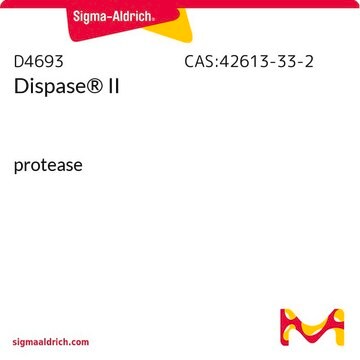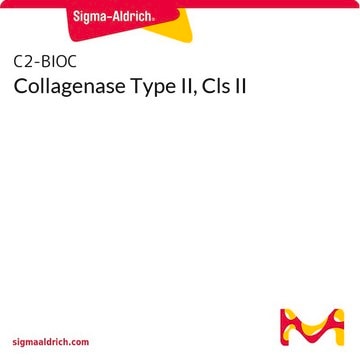Transportation information can be found in Section 14 of the product's (M)SDS.To access the shipping information for this material, use the link on the product detail page for the product.
Wichtige Dokumente
Q2876
Chinakrin-Senf -dihydrochlorid
≥85% (HPLC)
Synonym(e):
2-Methoxy-6-chlor-9-(4-bis-[β-chlorethyl]-amino-1-methylbutylamino)-acridin -dihydrochlorid, 9-[4-(Bis-(2-chlorethyl)-amino)-1-methylbutylamino]-6-chlor-2-methoxyacridin -dihydrochlorid
Größe auswählen
Größe auswählen
About This Item
Empfohlene Produkte
Assay
≥85% (HPLC)
Lagertemp.
−20°C
SMILES String
Cl[H].Cl[H].COc1ccc2nc3cc(Cl)ccc3c(NC(C)CCCN(CCCl)CCCl)c2c1
InChI
1S/C23H28Cl3N3O.2ClH/c1-16(4-3-11-29(12-9-24)13-10-25)27-23-19-7-5-17(26)14-22(19)28-21-8-6-18(30-2)15-20(21)23;;/h5-8,14-16H,3-4,9-13H2,1-2H3,(H,27,28);2*1H
InChIKey
JETDZFFCRPFPDH-UHFFFAOYSA-N
Suchen Sie nach ähnlichen Produkten? Aufrufen Leitfaden zum Produktvergleich
Allgemeine Beschreibung
Anwendung
Signalwort
Danger
H-Sätze
Gefahreneinstufungen
Acute Tox. 3 Inhalation - Acute Tox. 3 Oral - Repr. 2 - Resp. Sens. 1 - Skin Sens. 1
Lagerklassenschlüssel
6.1C - Combustible acute toxic Cat.3 / toxic compounds or compounds which causing chronic effects
WGK
WGK 3
Flammpunkt (°F)
Not applicable
Flammpunkt (°C)
Not applicable
Persönliche Schutzausrüstung
Eyeshields, Faceshields, Gloves, type P3 (EN 143) respirator cartridges
Hier finden Sie alle aktuellen Versionen:
Besitzen Sie dieses Produkt bereits?
In der Dokumentenbibliothek finden Sie die Dokumentation zu den Produkten, die Sie kürzlich erworben haben.
Kunden haben sich ebenfalls angesehen
-
What is the Department of Transportation shipping information for this product?
1 answer-
Helpful?
-
-
Is quinacrine mustard, product Q2876, suitable as a viability stain for platelets?
1 answer-
A customer's feedback utlizing the method outlined in Moroi, M. et al., Blood, 88(6), 2081-2092 (1996), stated it performed pretty well, giving a strong green signal using a standard GFP-filter.
Helpful?
-
Active Filters
Unser Team von Wissenschaftlern verfügt über Erfahrung in allen Forschungsbereichen einschließlich Life Science, Materialwissenschaften, chemischer Synthese, Chromatographie, Analytik und vielen mehr..
Setzen Sie sich mit dem technischen Dienst in Verbindung.










![1,4-Diazabicyclo[2.2.2]octan ReagentPlus®, ≥99%](/deepweb/assets/sigmaaldrich/product/structures/366/129/a6ff4175-974d-4fac-9038-b35e508ef252/640/a6ff4175-974d-4fac-9038-b35e508ef252.png)
